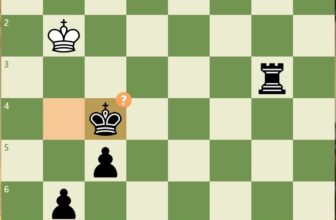
During the 25% off sale earlier this week, I took the plunge and upgraded from ChessBase 15 to ChessBase 17. The new version lacks a feature that I regularly use: endgame keys. However, the help files suggest a different method of finding particular types on endings: similar endgames under report (see image).
I tried the new method this morning and was not surprised that Megabase 2024 contains many thousands of games with two connected passed pawns in rook endings. Naturally, I started looking for games when the stronger side failed to win. In most cases, the ending was misplayed.
I had the position above a year ago in a 16 minute game on Playchess. I finished the game checkmating my opponent 20 moves later using 3 seconds per move or less on all but five moves. 9 seconds was the longest.
I do not have access to the time per move nor time remaining for those games that were drawn, although winnable. Even so, perhaps the errors are instructive.
Black to move
This position was reached in a game played in 1998. Black, rated 1355, played 69…f4 and the game was drawn after 70.Rf8. 69…Kg4 would have been my choice and Stockfish confirms that Black is winning.
In a game played in 2003 between two 1500s, the two pawns plus rooks ending was reached on move 47. Black made progress advancing his pawns over many moves. Even here, after 87.Rd5+, Black was winning.
Black to move
87…Rd3 88.Rxf5 Rf3+
This move throws away the win. 88…e3 was the only way to keep the win in hand.
Black to move
Black, rated 1598, spoiled the win with a move that reminded me of a position from Kling and Horwitz (1851) and posted as “Elementary Technique” a month ago.
62…Re5+
I would have played 62…Re1, which is one of several winning moves.
63.Rxe5 fxe5 64.Kxg5 and drawn.
White could have erred with 64.Kxe5, when the idea in Kling and Horwitz would secure the win for Black.
The final example is from a 2010 game between two stronger players in the championship of Chili.
Black to move
55…Kg8
56. Rg7+ Kf8 57.Rh7 Ke8 58.Ke6 Kd8 59.Kd6 Kc8 60.Kc6 Rc4+ 61.Kd5
Black to move
61…Rc7 spoiled the win, which is not entirely simple. Tablebases assure us that 61…Rf4 leads to checkmate in 42 moves. Black’s king is still cut off, though.
White found 62.Rh6! and a draw was agreed.
Exchanging rooks leads to an elementary winning pawn ending, while 62.Rh8 allows the Black king to become active.
Discover more from reviewer4you.com
Subscribe to get the latest posts to your email.











